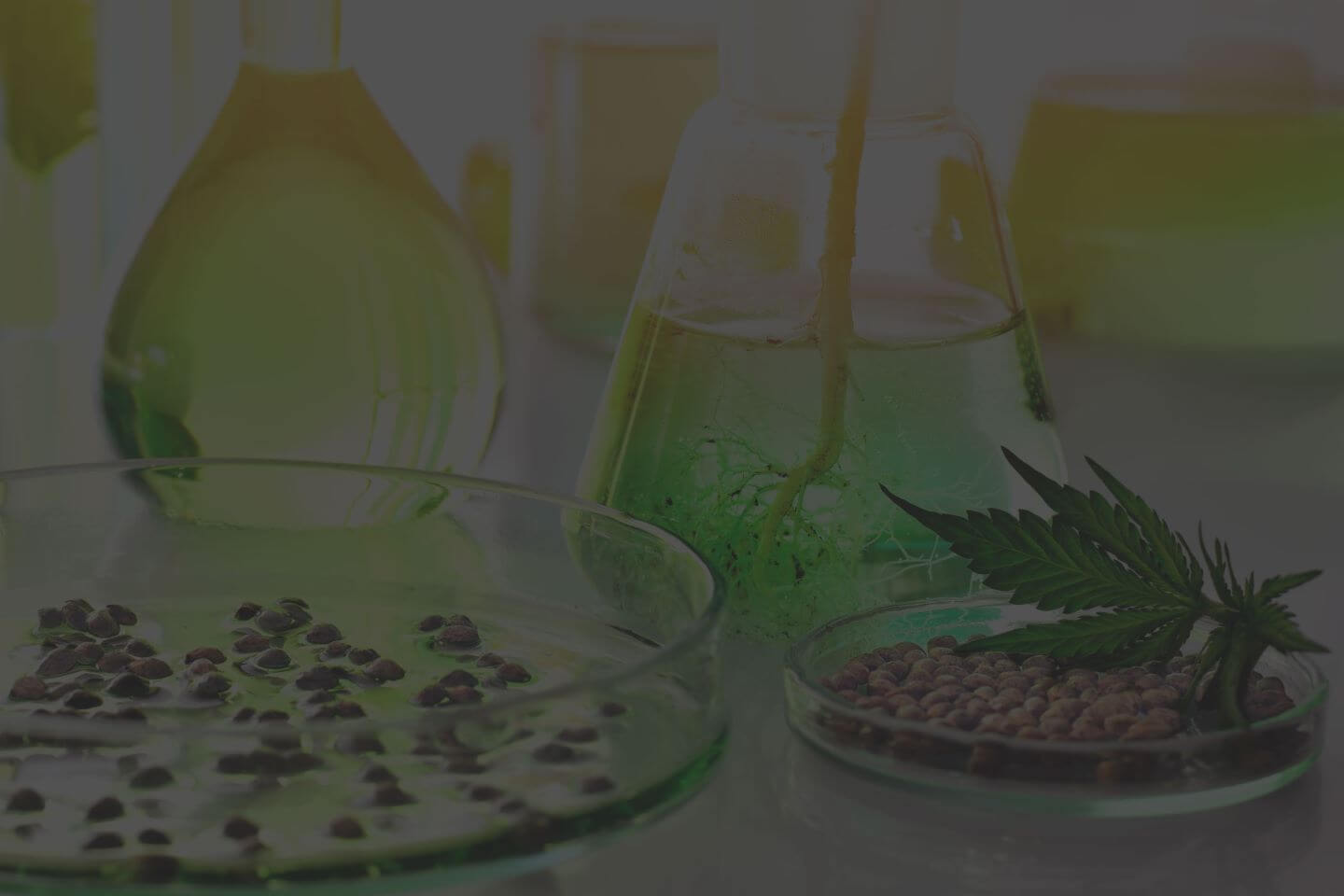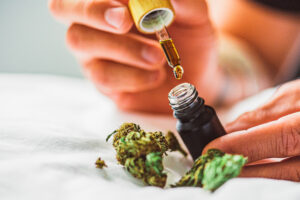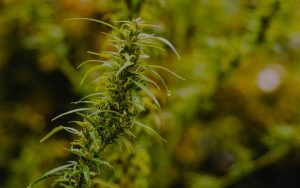All over the country, people are turning to cannabis. Whether they’re looking to alleviate pain without resorting to opiates, enhance their experience of their favorite album, relieve stress, or find creative inspiration for an art project, America is waking to an exciting new era of cannabis acceptance, curiosity, and research.
- Domestic marijuana production has increased by a factor of 10 in the past quarter of a century.
- Financial experts say legal cannabis will be an $80 billion industry by 2030.
- 33 states have legalized medical cannabis use.
- 10 states have legalized recreational cannabis use.
- A Marist poll has shown that more than half of American adults have tried cannabis at least once.
- As of 2017, the total estimated population of state-legal patients is 2,617,919.
- 9% of people aged 50 to 64 said they’ve used marijuana in the past year, which is double the number in the same age group in 2006.
There is a growing wealth of information about cannabis out there, and it can be easy to get overwhelmed. Every day, we see additional news stories about cannabis research, legality, and culture.
This guide is designed to help absolute beginners get started with cannabis and to make sense of a bold new world.
Section 1: Letting Go of Stigma
Currently, 34 states have legalized medical cannabis and 12 states (including Massachusetts) have legalized cannabis for adult recreational use. We can expect more states to legalize medical and recreational cannabis in the coming years, with federal legalization right around the corner.
With the turning tide of legalization, it’s important to handle cannabis with respect, responsibility, and an open mind. Years of propaganda and misinformation have led many of us to believe that cannabis can be harmful. As you experiment with cannabis, try to focus on new cannabis products as you would any other industry: with curiosity, research, and responsible use.
Here are a few tips for getting started:
Do’s:
Store cannabis out of reach of children and animals
Make sure you store your cannabis in a place that is inaccessible to children and pets. Find a case to store accessories and products with a lock and a smell proof carbon filter. This will help you avoid unwanted consequences. Cannabis is not meant for those that are underage.
Consult with dispensary employees (Budtenders or Hosts) on different options and products for your needs
Those that buy and sell cannabis products in the at state licensed dispensaries will be familiar with the various options available to you, and can help make recommendations.
Additionally, Happy Valley has in-store interactive educational tools to help you decide which products and consumption methods are right for you.
Start slowly, and at low dosages
Cannabis products vary in potency, so pay attention to total THC percentages in flower and THC mg in edibles. You can always consume more, you can’t consume less. Consuming too much cannabis at a time could result in anxiety, confusion, and other unpleasant sensations. Give your body time to process the effects of cannabis products, especially when consuming edibles.
Choose a comfortable, familiar setting for consumption
When experimenting with cannabis, make sure that you are in a place where you feel comfortable and safe in case you don’t like the effects of the particular cultivar, or take too much. This applies to trying new products as well; even if you’ve become accustomed to cannabis, new products can affect your body differently.
Finish tasks and obligations before consumption
Until you become accustomed to the effects of cannabis, it’s best to avoid responsibilities when enjoying and experimenting with cannabis products.
Don’ts:
Don’t drive or operate heavy machinery after consuming cannabis
Cannabis products can have a delayed onset (especially for edible products) and effects may take up to two hours to be noticeable. Driving with cannabis in your system is impaired driving, and remains a crime in the United States.
Don’t leave open containers in the car
Open containers are defined as having a broken seal, or partially consumed contents. If you have a 5-pack of joints, and one has been smoked, that pack is considered an “open container.”
Don’t refer to cannabis as “marijuana”
Though the term “marijuana” is fairly common in mainstream culture, the word has roots in the prohibition of cannabis. To truly let go of stigma, it’s important to use vocabulary that doesn’t put cannabis in a derogatory light.
Section 2: Cannabis Vocabulary
For the best cannabis experience, it’s important to understand the terminology and names of pieces of equipment. Here is a list of the most commonly used cannabis terms, defined:
Broad Leaf Varieties:
Cannabis cultivars previously referred to broad leaf varieties (BLV) as “Indica”. These cultivars feature short stalks and bushy bodies with wide leaves. Generally, BLV cultivars have relaxing effects.
Bubble Hash:
Bubble hash is a cannabis concentrate composed of millions of trichomes. It is extracted using a solventless method by agitating cannabis plant material in ice-filled water.
Budtender:
A budtender is a cannabis salesperson or store clerk. This is the person you will interact with when purchasing cannabis products. At Happy Valley we use the term “Hosts” instead of Budtender.
Butane Hash Oil:
Butane Hash Oil, or BHO, is a cannabis concentrate that is made by extracting the THC and terpenes using butane. It can also be a very dangerous method of extraction and should only be performed by someone with a background in chemistry.
Bubbler:
A bubbler is a glass piece used for consuming cannabis that features a water filtration aspect that ‘bubbles’ upon use. This piece will usually be larger than a hand pipe, but smaller than a tubular bong.
Cannabidiol (CBD):
One of the primary cannabinoids found in cannabis and hemp cultivars is Cannabidiol, commonly referred to as CBD. CBD has a non psychoactive effect.
Cannabinoids:
Cannabinoids are the main chemical compounds found in cannabis plants. The most commonly known are Tetrahydrocannabinol (THC) and Cannabidiol (CBD) however there are over 100 different cannabinoids in the cannabis plant. These chemical compounds are what interact with the Endocannabinoid System, resulting in the wide array of effects cannabis has been shown to produce.
CO2 extraction:
This is a method of cannabis extraction that utilizes CO2 as the main solvent.
Concentrates:
Concentrates are extracted forms of cannabis that feature high concentrations of cannabinoids and come in a variety of forms. Concentrates can include hash, shatter, wax, rosin and live resin.
Cultivars:
Cultivars, also referred to as “strains,” are different varieties of cannabis within the plant family.
Dab Rig:
A dab rig is a glass piece specifically designed to vaporize “dabs,” or small amounts of cannabis concentrate. (Learn How to Use a Dab Rig in this video tutorial)
Dispensary:
A store where legal cannabis can be obtained in both medical and adult use settings are referred to as dispensaries.
Dry Sift:
Dry sift, also referred to as kief, is a concentrate created by sieving and sifting the whole flower over screens, so resin glands fall through. They are then gathered into a powdery concentrate.
Edibles:
Edibles are foods and drinks that have been infused with cannabis.
Endocannabinoid System:
The ECS, or Endocannabinoid System, is your body’s dedicated system for interacting with cannabinoids, maintaining homeostasis in the body, and producing endogenous cannabinoids (endocannabinoids) like anandamide.
Extraction:
Extraction is the process of drawing desirable components from raw plant material.
Entourage Effect:
The Entourage Effect is the interactive effects observed when cannabinoids, terpenoids, and flavonoids are consumed together, rather than in isolation.
Flower:
The raw product of the cannabis plant is called the flower. Flower is also referred to as weed, pot, ganja, bud, or grass.
Grinder:
A grinder is used for crushing and condensing cannabis flower, which allows for more uniform smoking material. You’ll want to purchase a grinder for rolling the perfect joint!
Hash:
Hash is a traditional form of cannabis extract that does not use solvents.
Hemp:
Hemp is a part of the cannabis family and has a low-THC chemical make-up, at 0.3% or less. It is cultivated primarily for fiber, seeds, and other industrial purposes. Hemp is now federally legal for agricultural cultivation, thanks to the 2018 Farm Bill.
Hydrocarbon extraction:
The use of hydrocarbons to extract cannabinoids from plant material is known as Hydrocarbon Extraction.
Kief:
This is the powdery, pollen-like substance that rubs and shakes off of cannabis flower. This powder is made up of glandular trichome heads that have dried and fallen off of the product. It is also referred to as Dry Sift.
Narrow Leaf Varieties:
Cannabis cultivars previously referred to Narrow Leaf Varieties as “Sativas.” These cannabis cultivars feature long, thin leaves and are often more energizing than broad leaf varieties.
PAX:
One of the more popular ancillary cannabis brands, PAX manufactures vaporizers and smoking devices that make cannabis more accessible to consumers.
Phenotype:
Phenotypes are most simply defined as the physical traits that result from a cultivars interactions with the environment, rather than the plants genetic make up.
Recreational:
Cannabis that is used for enjoyment and non-medical reasons is referred to as recreational marijuana. In several states, recreational cannabis is referred to as “adult use.”
Resin:
When describing concentrates, resins are often “live,” which means that the plants were frozen and/or extracted prior to the curing process. Alternatively, resin can be used to describe the residual material that coats smokeware and the filter of a joint or a blunt.
Shatter:
Shatter is a form of cannabis concentrate that is stable to the touch but “shatters” like glass when broken.
Solventless:
Products that did not use butane, propane, hexane, or other hydrocarbon extraction methods are considered solvent-free.
Terpene:
A terpene is the part of the cannabis plant responsible for aromas and various entourage effects.
THC:
Tetrahydrocannabinol, or THC, is one of the more commonly known cannabinoids, and the main psychoactive ingredient in cannabis.
Tincture:
A specific type of cannabis extract that is designed to be consumed orally or sublingually.
Topical:
A specific type of cannabis product that is designed to be applied externally to the body and skin rather than consumed internally.
Trichome:
The glandular part of the cannabis plant that is responsible for producing desirable compounds such as cannabinoids, terpenes, and flavonoids.
Vaporizer:
A vaporizer is a device used to heat up cannabis to the desired temperature without using combustion. They come in a variety of options, including the popular handheld vape pens.
Section 3: Choosing the Right Cultivar
Modern cannabis science enables us to get more granular than ever before when it comes to selecting the right cultivars. Narrow leaf varieties (NLV), broad leaf varieties (BLV), and hybrids cater to a world of tailored effects and experiences.
Narrow Leaf Varieties:
NLVs, formerly referred to as “Sativa”, are often described as more invigorating, cerebral, active, and creative than their broad leaf counterparts. NLV cultivars generally provide an upbeat, daytime consumption experience that inspires and stimulates.
Broad Leaf Varieties:
BLVs, formerly referred to as “Indica”, are said to be more physically sedating, promoting relaxation and feelings of well-being. BLV products are great for calming down, de-stressing, and promoting restful sleep.
Hybrid Varieties:
Hybrid varieties are the result of genetic breeding and manipulation that involves combining NLV and BLV cultivars during the cultivation process. Generally, a female NLV plant will be pollinated with pollen from a male BLV plant or vice versa.
Additionally, these hybrid cultivars can then be backcrossed (bred again with their mother or father) to combine desirable effects of the individual plants. A hybrid cultivar may combine the euphoric, uplifting effects of an NLV cultivar with the relaxing, calming aspects of a BLV cultivar. Hybrid cultivars are great options for sampling from both NLV and BLV effects, and finding a comfortable middle ground on the cannabis cultivar spectrum.
Section 4: The Different Types of Cannabis Products
Flower
Cannabis flower is the final fruit of a harvest. These “buds” are harvested, trimmed, and packaged so the flower stays fresh. Smoked cannabis offers a fast onset, which means you’ll feel the effects of cannabis within minutes. Beginners should be careful with flower consumption. Start slow with one puff, wait a few minutes then take another puff.
Vaporized Cannabis
For those who don’t like inhaling smoke, cannabis can be vaporized. Cannabis flower and concentrates can be vaporized with specific devices designed to heat the product to a temperature that releases potent, cannabinoid-filled, pleasant-tasting vapors, without the worry of inhaling combusted byproducts.
Edibles
Edibles are food and drinks infused with cannabis. Edibles offer a discrete, smoke-free way to consume cannabis, without the raw taste of cannabis or the distinct smell. That being said, it can be easy to overdo it with edibles, as serving sizes vary and may have delayed onset times. To avoid this, always pay close attention to your service size and how many milligrams of THC are contained in each serving. Wait at least 1-2 hrs before taking another dose.
Tinctures & Ingestible Oils
Tinctures are a form of extract designed to be ingested orally, usually with a dropper, and administered sublingually (under your tongue). This allows for quicker absorption and discretion, but has a potency limit as there is a physical limit to how many cannabinoids can be contained in a drop of liquid. Additionally, tinctures, like edibles, should be taken with caution.
Topicals
Topical cannabis products are designed to be applied directly to your skin to target specific ailments, tissues, and pains. Topicals are great for aches, pains, scars, recent surgeries, and even daily applications like sunburn. Topicals have a limited effect on your mind, and generally will not get you high in the same way that an edible or smokable product might.
Section 5: Step-By-Step Procedure
Start Low and Go Slow:
It takes time to experience the full effects of cannabis, and to get familiar with your limits. Starting slowly, with small servings will allow you to gradually find your desired dosage. You can always consume more, but you can’t consume less.
How to Use Every Form of Cannabis:
Smoking Flower
To smoke cannabis flower, you can either roll a joint or blunt, or you can use a pipe, bubbler, or bong. For joints and blunts, use a grinder to reduce flower to a finer size. Place a small amount of ground flower in a rolling paper or blunt wrap. For pipes, bubblers, and bongs, pack small pieces of flower into a bowl, and gently light using a lighter, match, or wick.
Rolling joints and blunts takes plenty of practice, so don’t be afraid to ask for help from a bud tender or a cannabis-savvy friend. To save yourself time and energy, buying a pre-rolled joint or blunt may be the most convenient option.
Vaporizing Cannabis
Vaporizing cannabis has gotten easier over the years. Vaporization can involve a desktop device with an oven-like chamber that heats cannabis to release vapors for inhalation. Vapes can be purchased as pre-filled “carts” or “cartridges”, commonly referred to as a 510 thread that screw into a battery and can be activated by a puff or push of a button.
Ingesting Edibles
To eat or drink an edible, simply open the package, consume a single serving, and wait an hour or two before consuming more. For some, a single serving will be just right, while others may need more or less. Cannabis bonds well with food, so it is recommended to eat something with your edible for maximum effects.
Tetrahydrocannabinol (THC) and cannabidiol (CBD) are fat-soluble, and readily bond with lipids. Eating fattier cannabis edibles can increase the effects of cannabinoids in your system.
Ingesting Tinctures
Similar to edibles, to ingest a tincture, simply fill the dropper or dosing utensil with the recommended amount, and gently dispense under your tongue sub lingually, allowing the tincture to be absorbed. A similar dosage caution applies with tinctures as it is always easier to take more than it is to take less.
Applying Topicals
Topicals can be used for spot treatment as well as regular chronic ailments and day-to-day purposes. You can apply a topical to arthritis, fresh tattoo, old scars, recent surgical tissue, sunburn, or bug bites. Our skin is the largest organ in the body, and has the ability to absorb and utilize cannabinoids in a variety of ways. Be cautious to read the ingredients and make sure there aren’t any irritants that could cause discomfort to sensitive skin tissue. Some topicals come with natural oils like peppermint which can cause a burning or heat sensation.
Section 6: Effects to Expect
Cannabis has been known to have a variety of effects depending on the cultivar and the amount consumed. Happy Valley uses sophisticated methods to cultivate specific cultivars that align with the consumer’s intended experience.
Common Effects of Cannabis:
- Alertness
- Appetite increase/decrease
- Anxiety increase/decrease
- Bodily euphoria
- Decreased blood pressure
- Dry mouth
- Dry, reddened eyes
- Euphoria
- Heart rate changes
- Increased creativity
- Increased enjoyment of music
- Joy
- Laughter
- Memory enhancement/impairment
- Nausea relief
- Pain relief
- Sensory enhancement
- Skewed perception of time
- Sleepiness
The Entourage Effect
The entourage effect is the effect observed when multiple compounds of the cannabis plant are consumed together rather than in isolation from one another. While it was previously believed that the THC potency of a cultivar was its primary factor of efficacy, studies have since shown that cannabinoids work better when used in combination with one another, as well as the other compounds from the plant.
Different ratios within a cultivar can offer drastically different experiences, which is why Happy Valley stresses the importance of connecting consumers with the cultivars and products that align best with their intended experience.
Section 7: Medicinal Benefits:
Cannabis has been shown to offer a variety of medicinal benefits for treatment of conditions that are recognized by the state of Massachusetts as “debilitating medical conditions,” which include cancer, glaucoma, positive status for human immunodeficiency virus, acquired immune deficiency syndrome (AIDS), hepatitis C, amyotrophic lateral sclerosis (ALS), Crohn’s disease, Parkinson’s disease, multiple sclerosis, and “other conditions as determined in writing by a qualifying patient’s physician.”
Consult with a Medical Cannabis Doctor:
Medical cannabis patients have certain privileges, such as exemption from certain taxes and being allowed to possess up to a 60-day supply of cannabis. This can be advantageous if you prefer not to visit the dispensary regularly, or have needs that require that you consume more than a casual consumer.
If you’re considering cannabis for medical reasons, talk with your healthcare provider or set up a consultation at one of Happy Valley’s locations where we can walk you through your options, the process of obtaining a medical cannabis recommendation, as well as offer guidance surrounding which products would work best for your specific situation.
Happy Valley is staffed by experts in the cannabis field. Whether it’s for personal or medical use, we can get you started on your cannabis journey.




